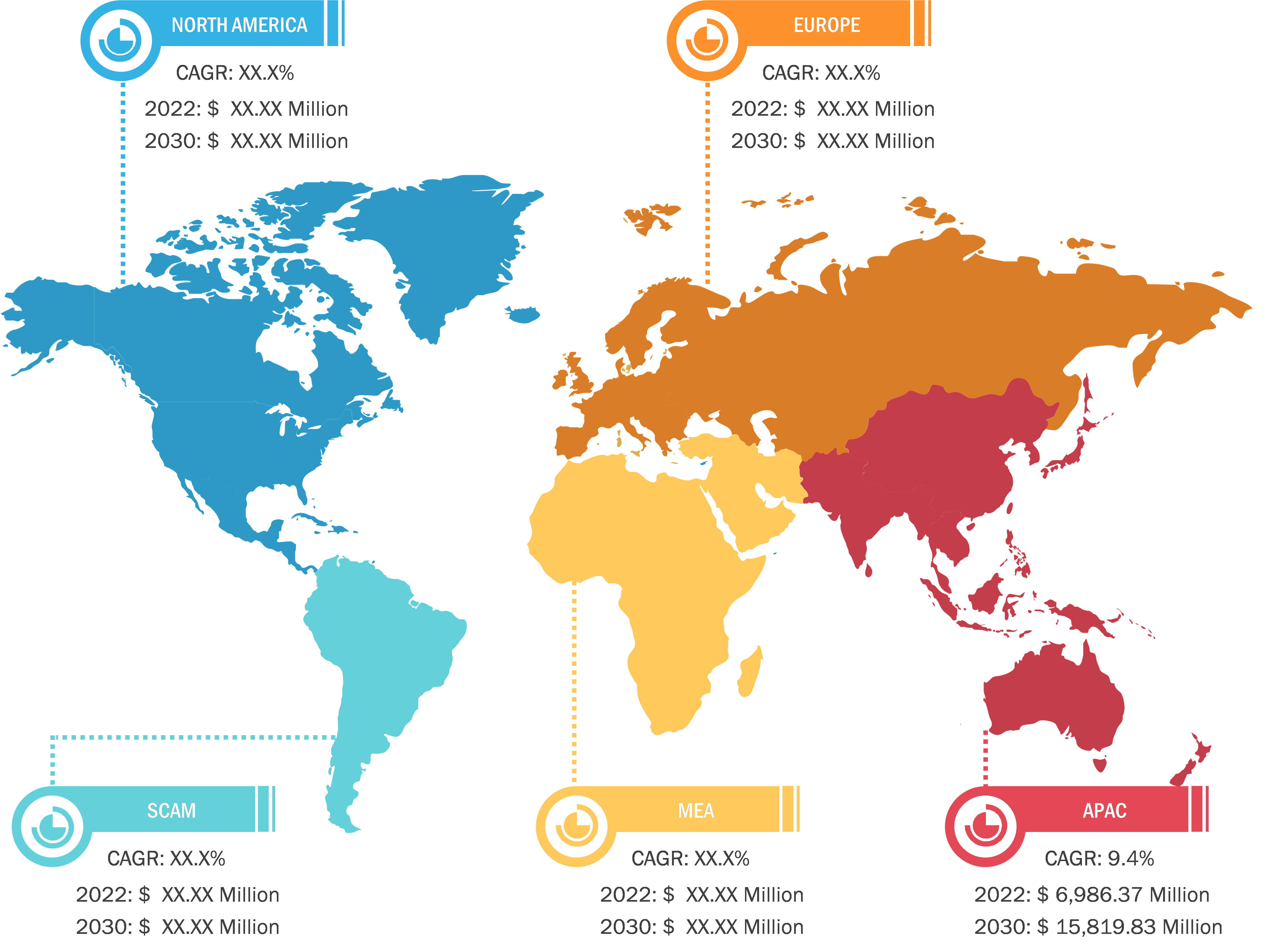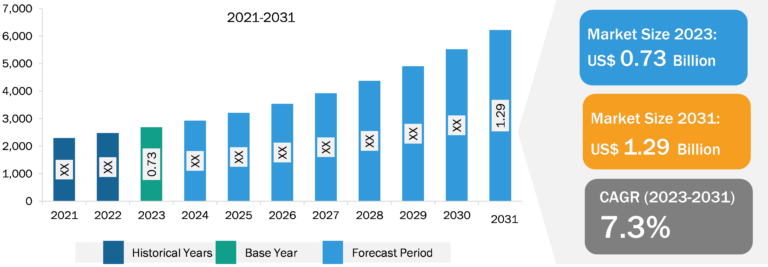
Breast Cancer Therapeutics Market
Asia Pacific is the fastest-growing region in the global breast cancer therapeutics market. North America accounted for the largest share of the global breast cancer therapeutics market in 2022. In the region, the US held the largest breast cancer therapeutics market share and is anticipated to register the highest CAGR during 2022–2030. The growth of the breast cancer therapeutics market in the US is primarily driven by the higher prevalence of breast cancer, favorable reimbursement scenario, FDA approvals for breast cancer therapeutics, developments by the market players, and the prominent presence of key market players in the country.
Breast cancer is one of the most common types of cancer and has a sizable market for therapies. According to the Centers for Disease Control and Prevention, in 2020, in the US, 239,612 new cases of breast cancer were reported among women, of which ~42,273 have succumbed to death. For every 100,000 women, 119 new breast cancer cases in women were reported, of which nearly 19 have died. Chemotherapy, immunotherapy, targeted therapy, and hormonal therapy are a few of the available therapeutic options. While hormonal therapy seeks to stop the hormones that support the growth of specific forms of breast cancer, chemotherapy uses medicines to destroy cancer cells. Immunotherapy uses the body’s immune system to combat cancer cells, whereas targeted therapy concentrates on specific chemicals implicated in cancer growth. Several factors influence the therapeutic market for breast cancer in the US. The need for efficient therapies is partly fueled by the nation’s high prevalence of breast cancer.

Growing Burden of Breast Cancer Drives Breast Cancer Therapeutics Market Growth
Breast cancer is considered the most common cancer among women worldwide, and its incidence is increasing globally. Factors such as lifestyle changes, hormonal imbalances, genetic predisposition, and environmental factors contribute to the rising prevalence of breast cancer. As per the American Cancer Society, approximately 5–10% of all malignancies are caused by genes. Several cancer-predisposition genes have been discovered. For instance, mutations in the inherited cancer predisposition genes BRCA1 and BRCA2 raise the risk of getting certain malignancies, such as breast, ovarian, and prostate cancer.
Breast cancer is one of the most common types of cancer in the US. A report published by Breastcancer.org in January 2022 stated that 1 in 8 women in the nation (or ~13%) will acquire invasive breast cancer over their lifetime. According to the same source, 287,850 new incidences of invasive breast cancer, along with 51,400 new cases of noninvasive (in situ) breast cancer, are detected in women in the US in 2022. In the same year, the country is recorded ~2,710 additional cases of invasive breast cancer in men. Approximately 1 in 833 men might develop breast cancer in their lives. With the rise in breast cancer cases, there is an increasing need for effective and targeted therapies to improve patient outcomes. This has led to a surge in research and development activities in breast cancer therapeutics.
Therefore, the growing burden of breast cancer drives the breast cancer therapeutics market.
Breast Cancer Therapeutics Market: Segmental Overview
The breast cancer therapeutics market, by drug therapy, is segmented into targeted drug therapy, hormonal drug therapy, chemotherapy, and immunotherapy/ biological therapy. In 2022, the targeted drug therapy segment held the largest share of the market and is expected to grow at the fastest rate during the coming years.
The breast cancer therapeutics market, by breast cancer type, is segmented into hormone receptor, HER2+, and triple-negative breast cancer. In 2022, the hormone receptor segment held the largest share of the market and is expected to grow at the fastest rate during the coming years.
The breast cancer therapeutics market, by distribution channel, is segmented into hospital pharmacies, drug stores and retail pharmacies, and online pharmacies. In 2022, the hospital pharmacies segment held the largest share of the market. The online pharmacies segment is estimated to grow at the highest CAGR from 2022 to 2030.
Breast Cancer Therapeutics Market: Competitive Landscape and Key Developments
Eli Lilly and Co, Novartis AG, AstraZeneca Plc, Pfizer Inc, Gilead Sciences Inc, Merck & Co Inc, Genentech Inc., Teva Pharmaceutical Industries Ltd, and Amgen Inc. are a few key companies operating in the breast cancer therapeutics market. These companies adopt product innovation strategies to meet evolving customer demands, which allows them to maintain their brand name in the breast cancer therapeutics market.
A few of the recent developments in the global breast cancer therapeutics market are mentioned below:
- In July 2023, AstraZeneca and Daiichi Sankyo’s Enhertu was approved in China as a monotherapy for treating adult patients with unresectable or metastatic HER2-low breast cancer. The approval by China’s National Medical Products Administration (NMPA) is based on the results of the DESTINY-Breast04 Phase III trial, first presented at the American Society of Clinical Oncology 2022 Annual Meeting and published in The New England Journal of Medicine.
- In June 2023, Novartis presented positive primary endpoint data from the pivotal Phase III NATALEE trial at the 2023 American Society of Clinical Oncology (ASCO) Annual Meeting. Data showed that Kisqali plus endocrine therapy (ET), compared to ET alone, lowered the risk of cancer recurrence by 25.2% in patients with stage II and III HR+/HER2- early breast cancer.






